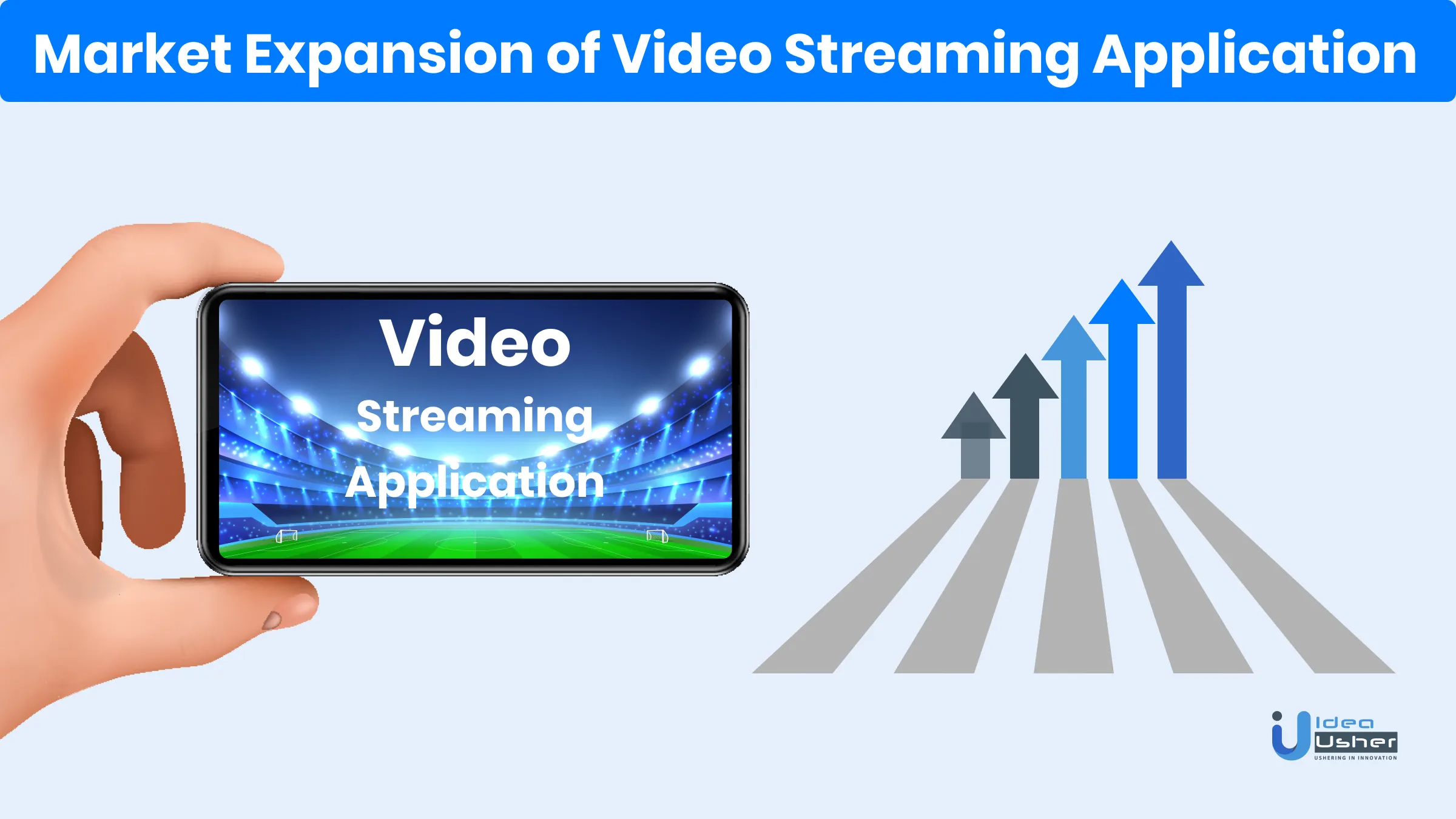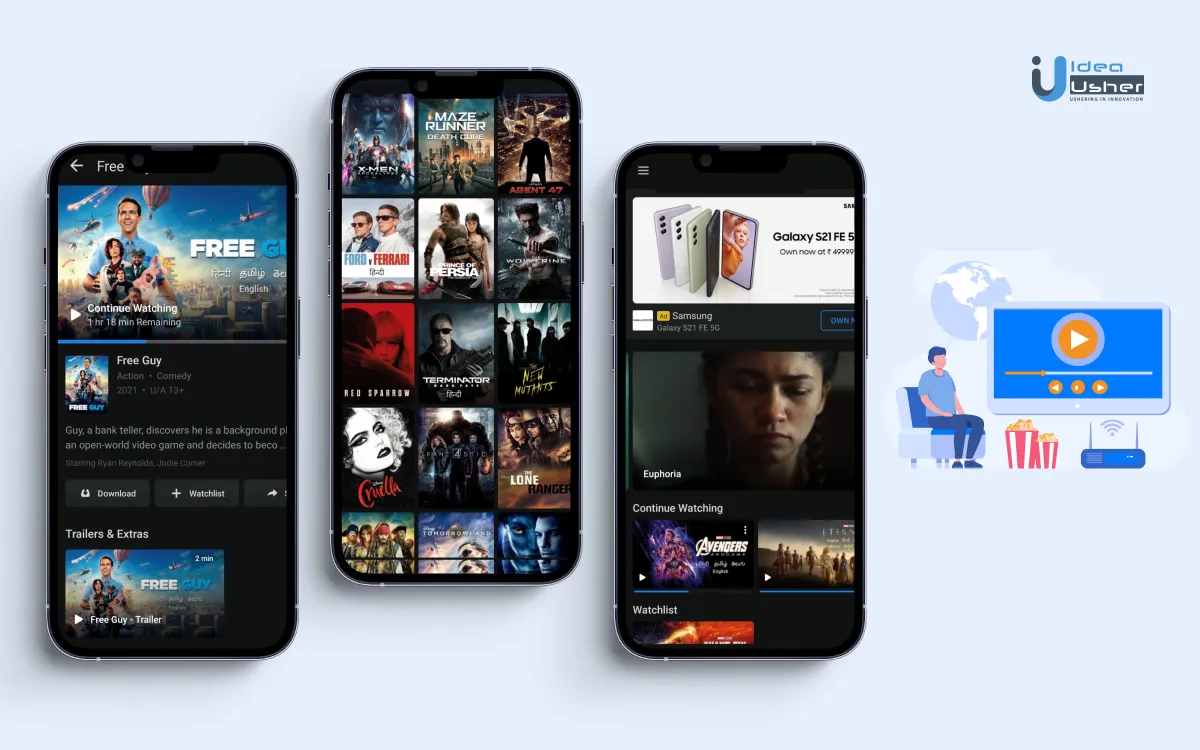Not too many years ago, watching TV or movies outside of the cinema was a boring affair. It was all about flipping channels on the cable box, until luckily catching something of our choice playing somewhere! Now, traditional media companies are rapidly becoming archaic and outdated, being replaced by video on demand (VoD). The future of video streaming applications looks bright as Hollywood tentatively stares at the OTT platforms as a gold mine of revenue!
Today, you can search or browse the entire catalog of a video streaming application on your home television or a smart device. You can discover the exact thing that you are craving to watch and watch it on-demand at your convenience.
The Netflix Standard
Netflix was the preeminent video streaming service, establishing the model for over-the-top (OTT) content streaming and setting the standard for the barrage of video streaming platforms to follow. From a service renting boxed video content delivered through the postal mail to on-demand streaming entertainment delivered, at last count (in 2021) to 203.7 million subscribers, Netflix serves not only as a spearhead but a useful bellwether for the future of the video content delivery and therefore, presently, streaming industry.
Also Read: Live Video Streaming Apps – The Next Big Thing
The Deloitte Study
A study conducted by the company Deloitte Germany posited and analyzed future scenarios for Netflix in order to project the potential future of the entire TV and video streaming industry by 2030.
The Four Major Examined Scenarios:
1. Supermarket – Will certain global digital platforms like Google, Apple, Amazon and, of course, Netflix continue to dominate the TV and video streaming marketplace and ultimately replace the national broadcasters entirely?
2. Content Endgame – Will the video and TV content producers be the ones who direct the future of the industry?
3. Revenge of the Broadcasters – Traditional broadcasters have caught on to the digital transformation and recognized that their business is in jeopardy if they don’t adjust and adapt their business model to changing times. As such, many have come out with their own streaming applications. Will it be enough? Will the national broadcasters be able to harness the new digital landscape quickly and effectively enough to regain and maintain their stronghold on the TV and video marketplace?
4. Lost in Diversity – Rather than select corporate giants of any particular type controlling the direction of the industry, could it more broadly diversify into a synergistic ecosystem in which traditional content platforms, producers, and providers participate in cooperative efforts, with smaller and more independent sources like Hotdog taking their place and prominence alongside the global leaders? The study also examined which platforms can best reach and monetize customers and how.
Build Better Solutions With Idea Usher
Professionals
Projects
Drivers Of Video Viewing

Regardless of which of these four scenarios play out, several main factors will invariably characterize the incredibly diverse and dynamic market for viewing video content:
- Digitalization
- New market offers
- Digital player disruption
- Consumer expectations
- Usage habits
These factors, both individually and combined, have helped define video streaming as we know it today and will continue to help shape it well into the future. How that future will look, exactly, is somewhat muddied by the complexities and uncertainties of the constant diversification taking place in the industry and the ever-shifting market landscape.
Also Read: How To Create Your Own Live Streaming App?
Market Expansion
According to a Grand View Research Report, the worldwide video streaming market should reach nearly $224 billion by 2028, expanding nearly 21% in just the seven years between 2021 and 2028.
US video streaming app revenue grew between 2015 and 2020 from $7.1 billion to $24.1 billion. Between 2020 and 2025, it is estimated to grow from $24.1 billion to $42 billion.

In the UK, meanwhile, video streaming app revenue grew between 2015 and 2020 from £0.5 billion to £3.0 billion. Between 2020 and 2025, it is estimated to grow from £3.0 billion to £4.8 billion.
Finally, in China, video streaming app revenue grew between 2015 and 2020 from $7.7 billion to $18.1 billion. Between 2020 and 2025, it is estimated to grow from $18 billion to $34 billion.
Signs Of The Times
The future of video streaming applications will be marked by certain indicators:
- Increasingly fast and available fiber optic and 5G internet connections allowing for faster streaming and downloading of content, even in remote and densely populated areas
- More linear, live broadcasts like sports, concerts and political events
- More personalized advertising
- Less market regulation and continued net neutrality
- Use of blockchain technology in streaming video content more securely
- Using artificial intelligence (AI) to improve video streaming quality
- Use of cloud-based streaming solutions to increase streaming speeds and reduce lag and buffer lengths
In Summary
As TV and video content producers and providers have found of late, their future outlook looks grim. In order to remain relevant in an increasingly diverse digital landscape replete with endless consumer choice, collaboration among content sources, including direct competitors, is practically indispensable. So, too, is consistent investment in ever-advancing digital technologies in order to remain relevant with audiences.
A Skilled Developer For Every Project
Trusted by 100+ clients
The future of video streaming applications led by OTT platforms have changed the perception of audience. Producing excellent content is not enough to capture their imagination anymore. Now, the manner of delivery will begin to matter as much as what is being delivered. Contact our experts to have an even deeper understanding of the OTT platforms and video streaming apps.
FAQs
Q. How Is The Video Streaming Market Shaping Up & Where Is It Headed?
A. The global video streaming market is witnessing massive growth and will reach $223.98 billion by 2028, reported by Grand View Research Inc. The market will expand at a CAGR (Compound Annual Growth Rate) of 21% from 2021 to 2028. The implementation of cloud-based video-streaming solutions, blockchain technology, and artificial intelligence directly influences its growth.
In the Video Streaming (SVoD) segment, the average revenue per user(ARPU) is all set to grow to US$69.49 in 2022 (Source: www.statista.com)
Q. What Were The Most Popular Video Streaming Applications In 2021?
A. The most popular video streaming applications in 2021 were Netflix, Hulu, Amazon Prime Video, Funimation, Disney+, HBO Max, and Peacock.
Q. What’s The Cost To Develop A Video-Streaming Application?
A. If you are looking to develop a video-streaming application with the basic essential features, the cost will be around $8000. However, it can increase if you are looking to incorporate the industry-leading features and a top-notch UI.




















